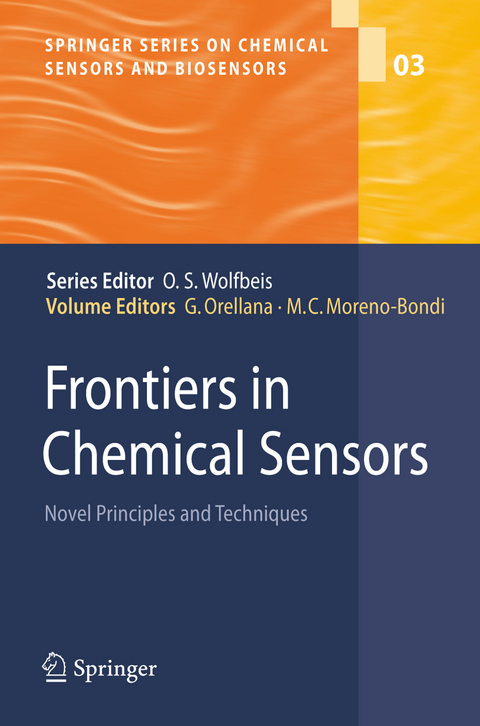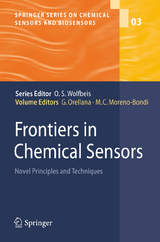Frontiers in Chemical Sensors
Novel Principles and Techniques
Seiten
2005
|
2005
Springer Berlin (Verlag)
978-3-540-27756-9 (ISBN)
Springer Berlin (Verlag)
978-3-540-27756-9 (ISBN)
With their similarity to the organs of the most advanced creatures that inhabit the Earth, sensors are regarded as being the "senses of electronics": arti?cial eyes and ears that are capable of seeing and hearing beyond the range of - man perception; electronic noses and tongues that can recognise odours and ?avours without a lifetime training; touch that is able not only to feel the texture and temperature of the materials but even to discern their chemical compo- tion. Among the world of chemical sensors, optical devices (sometimes termed "optodes", from the Greek "the optical way") have reached a prominent place in those areas where the features of light and of the light-matter interaction show their advantage: contactless or long-distance interrogation, detection sensitivity, analyte selectivity, absence of electrical interference or risks, and lack of analyte consumption, to name just a few. The introduction of optical ?bres and integrated optics has added more value to such sensing since now light can be con?ned and readily carried to dif?cult-to-reach locations, higher information density can be transported, indicator dyes can be immobilised at the distal end or the evanescent ?eld for unique chemical and biochemical sensing (including multiplexed and distributed measurements), optical s- sors can now be subject to mass production and novel sensing schemes have been established (interferometric, surface plasmon resonance, ?uorescence energy transfer, supramolecular recognition . . . ).
Absorbance-Based Integrated Optical Sensors.- Luminescence Lifetime-Based Imaging of Sensor Arrays for High-Throughput Screening Applications.- Cataluminescence-Based Gas Sensors.- Hollow Waveguide Infrared Spectroscopy and Sensing.- Combinatorial Method for Surface-Confined Sensor Design and Fabrication.- The Interplay of Indicator, Support and Analyte in Optical Sensor Layers.- Challenges in the Design of Optical DNA Biosensors.- Gold Nanoparticles in Bioanalytical Assays and Sensors.- Reverse Symmetry Waveguide for Optical Biosensing.- Materials for Luminescent Pressure-Sensitive Paint.- Optical Sensing of Enantiomers.- Optical Sensors for Ions and Protein Based on Digital Color Analysis.
| Erscheint lt. Verlag | 10.11.2005 |
|---|---|
| Reihe/Serie | Springer Series on Chemical Sensors and Biosensors |
| Zusatzinfo | XII, 372 p. |
| Verlagsort | Berlin |
| Sprache | englisch |
| Maße | 155 x 235 mm |
| Gewicht | 765 g |
| Themenwelt | Naturwissenschaften ► Chemie ► Analytische Chemie |
| Schlagworte | biosensors • DNA biosensors • Food Analysis • High-throughput screening • Medical diagnostics • Optical Sensing • Optosensing • particles • Sensoren • sensors • spectroscopy |
| ISBN-10 | 3-540-27756-0 / 3540277560 |
| ISBN-13 | 978-3-540-27756-9 / 9783540277569 |
| Zustand | Neuware |
| Haben Sie eine Frage zum Produkt? |
Mehr entdecken
aus dem Bereich
aus dem Bereich




